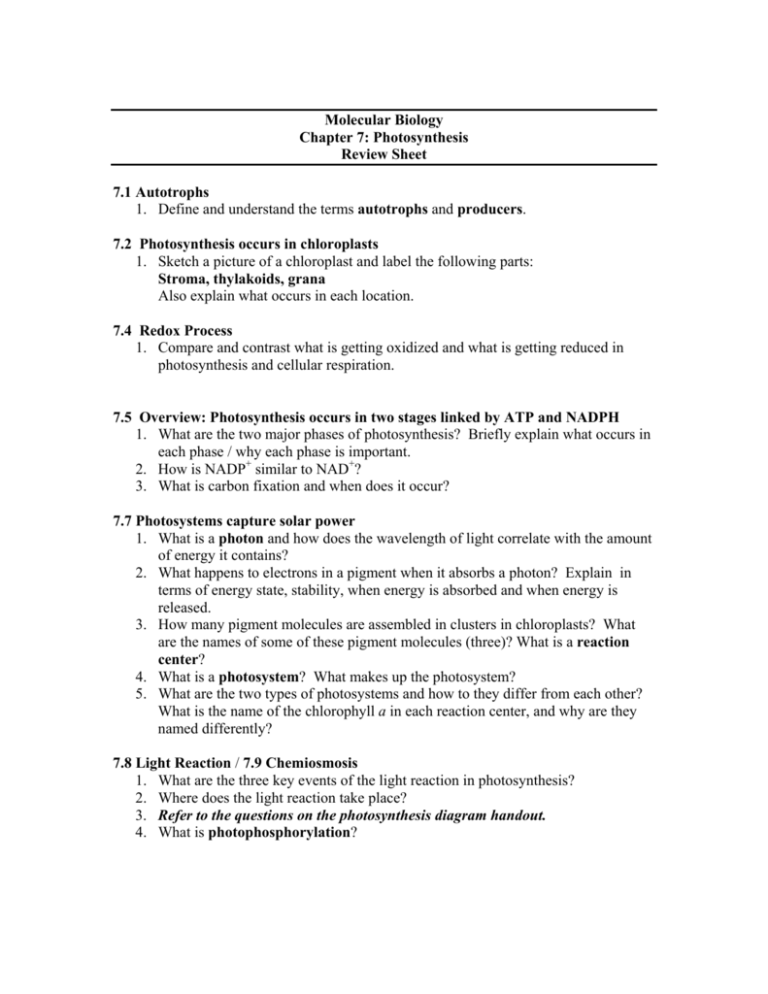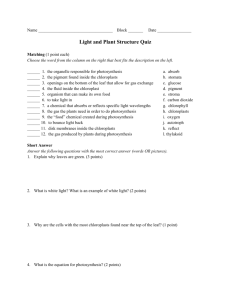Molecular Biology Chapter 7: Photosynthesis Review Sheet 7.1
advertisement

Molecular Biology Chapter 7: Photosynthesis Review Sheet 7.1 Autotrophs 1. Define and understand the terms autotrophs and producers. 7.2 Photosynthesis occurs in chloroplasts 1. Sketch a picture of a chloroplast and label the following parts: Stroma, thylakoids, grana Also explain what occurs in each location. 7.4 Redox Process 1. Compare and contrast what is getting oxidized and what is getting reduced in photosynthesis and cellular respiration. 7.5 Overview: Photosynthesis occurs in two stages linked by ATP and NADPH 1. What are the two major phases of photosynthesis? Briefly explain what occurs in each phase / why each phase is important. 2. How is NADP+ similar to NAD+? 3. What is carbon fixation and when does it occur? 7.7 Photosystems capture solar power 1. What is a photon and how does the wavelength of light correlate with the amount of energy it contains? 2. What happens to electrons in a pigment when it absorbs a photon? Explain in terms of energy state, stability, when energy is absorbed and when energy is released. 3. How many pigment molecules are assembled in clusters in chloroplasts? What are the names of some of these pigment molecules (three)? What is a reaction center? 4. What is a photosystem? What makes up the photosystem? 5. What are the two types of photosystems and how to they differ from each other? What is the name of the chlorophyll a in each reaction center, and why are they named differently? 7.8 Light Reaction / 7.9 Chemiosmosis 1. What are the three key events of the light reaction in photosynthesis? 2. Where does the light reaction take place? 3. Refer to the questions on the photosynthesis diagram handout. 4. What is photophosphorylation? 7.10 Calvin Cycle 1. Refer to the questions on the photosynthesis diagram handout. 7.11 Review 1. What does the plant use the products from photosynthesis for? 7.12 C4 and CAM plants 1. What does the ‘C3’ in C3 plants stand for? What are some types of C3 plants and how does it protect itself from dehydrating on hot, dry days? What are some of the dangers or disadvantages involved in this protection process? 2. What is photorespiration? When does it occur? Why is it detrimental? 3. What does the C4 in C4 plants stand for? What do these plants do to save water as well as prevent photorespiration? 4. What are CAM plants (some examples) and how does it prevent from dehydrating?






